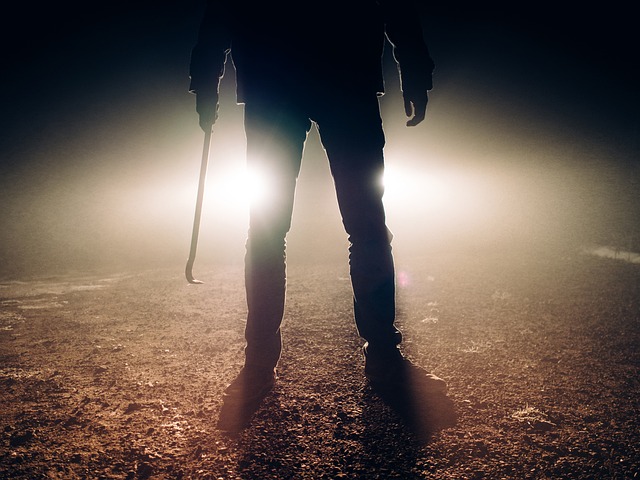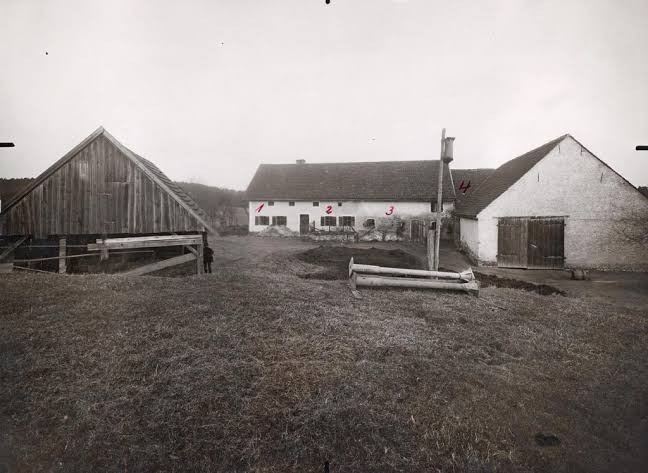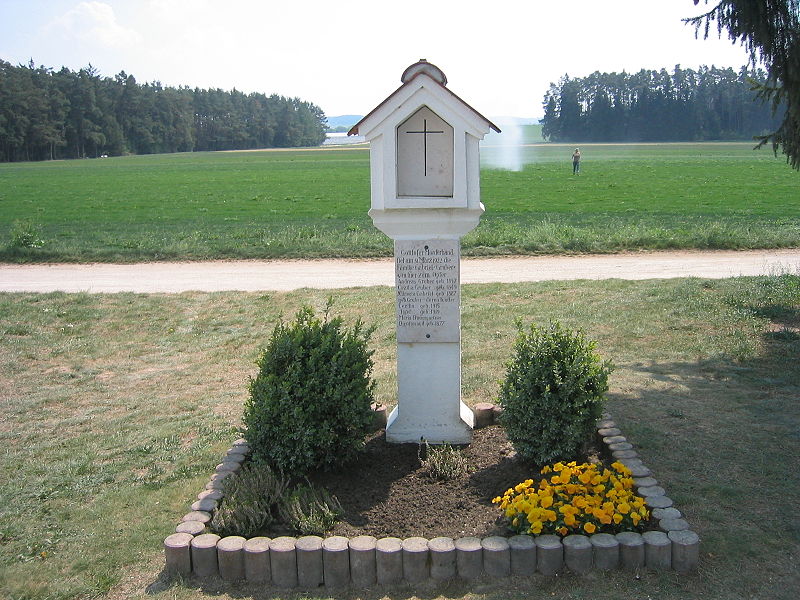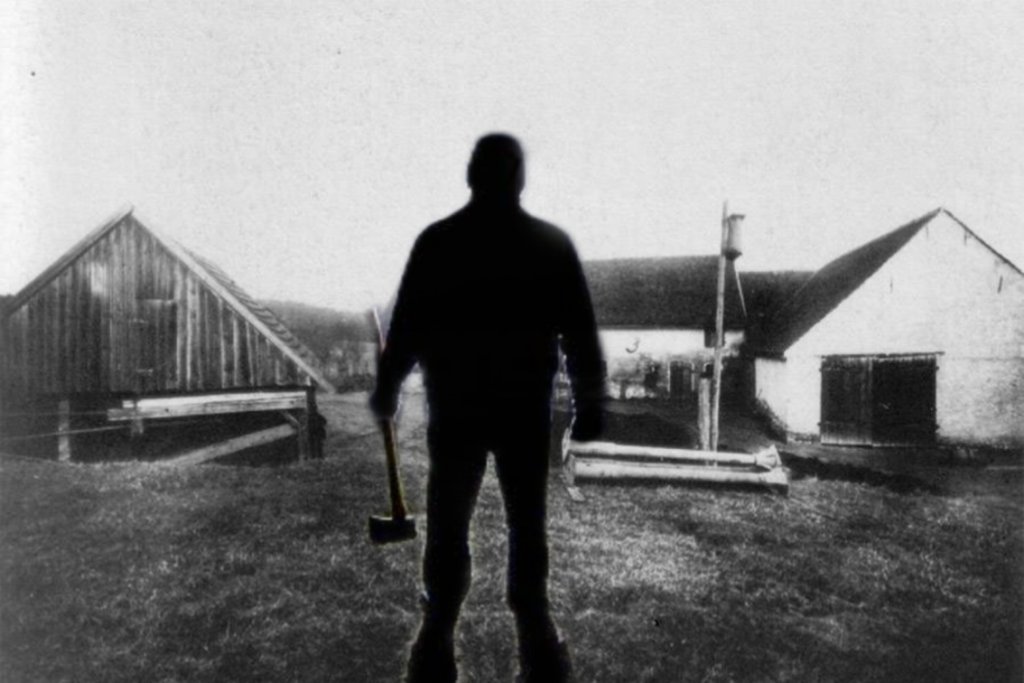Amid rural Germany, a small farm by the name of Hinterkaifeck would become the unlikely center of attention for the gruesome murders that remain chillingly unsolved.
On the evening of March 31st, 1922, disaster struck a small Bavarian farmstead about 43 miles north of Munich, Germany. The six inhabitants of the farm were brutally murdered with a mattock.
The identity of who slaughtered them remains a mystery to this day and is one of the most infamous murder cases in human history.
So what exactly happened to the six people at Hinterkaifeck farmstead on that tragic winter night?
If you love diving into cold cases like this, you might enjoy solving your own fictional murder mysteries with Hunt A Killer — an immersive crime-solving game that puts you in the role of a detective.
🎯 Investigate Your Own Mystery Here
The Gruber family

Although their farm in Hinterkaifeck was nestled out of sight, the Gruber family was infamous in the area even before the events of that terrifying night of their murders.
Andreas Gruber was the antisocial type, and not averse to domestic violence, directed mostly at his wife Cazilia. Rumor had it Andreas was also the father of his two-year-old grandchild, Josef.
He had, according to locals, maintained an incestuous relationship with his daughter Viktoria, who he kept strict control of and forbade to remarry.
However, she managed to travel to church regularly where it was said she sang with a beautiful yet mournful voice in the church choir.
Life at the farm turned weird when their maid, Maria, told the family that she had to leave the farm immediately. She’d been hearing voices around the house, and was kept awake at night by the sound of disembodied footsteps coming from the attic.
Sensing evil had taken hold of the house, and fearing for her safety and sanity, she told the family she had to leave; six months later, she would be proven tragically right. The victims on that bloody night were six in number.
The parents, Andreas and Cazilia aged 63 and 72, their widowed daughter Viktoria Gabriel (aged 35), her children Cazilia and Josef, aged 7 and 2, and the new family maid, Maria Baumgartner, aged 44.
Related article:- 10 best true crime books that would chill you to the bone
The gruesome murders

Exactly what happened that night will never be known for certain, however, it is thought that whoever killed them lured each member of the family into the barn one by one.
Except, that is, for the two-year-old Josef who was murdered in his cot, and the maid, who was slaughtered in her bedchamber.
The report from the autopsies, undertaken by court physician Dr. John Baptist Aumuller, showed the elder Cazilia exhibited signs of strangulation and seven blows to the head leading to a cracked skull.
Her husband’s face was so badly beaten, his cheek bones protruded from his shredded face. Viktoria’s skull was smashed and her head had several star-shaped wounds.
The young Cazilia’s jaw had been shattered and her neck and face was covered in large gaping wounds. Her hair was discovered in clumps in her hands while bald patches were on her head.
The 7-year-old had not been killed instantly, and it is thought that while trapped in the dark with her dead parents beside her in the barn, true panic set in.
She would have been terrified, pulling out her hair with abject fear, too terrified to even scream for help. Inside the farmhouse, little Josef and the maid were killed with swift blows to the head and face.
Related article:- 7 chilling Hunt A Killer games to test your detective skills
Mysterious events

A few days before the killing spree, the father, farmer Andreas Gruber, told neighbors that he’d discovered mysterious footprints in the snow leading from the edge of the forest to the farm, but no footsteps were leading back to the house.
The house keys had gone missing several days before the horrific crime. A maid had left the farm six months before the brutal killing, claiming that the farmstead was haunted.
The new maid arrived at the farm that fateful day and was rewarded for her troubles with an axe to the face later that night.
After murdering the entire family, the killer had probably remained in the house for four days, as smoke bellowing from the chimney could be seen by the neighbors.
The farm animals had been fed and somebody, presumably the killer, had even gone to the trouble of milking the cows. The killer helped himself to food from the kitchen and prepared meals at the farm.
On April 4th, neighbors came to the farmstead as the family hadn’t been seen for four days and Cazilia had failed to turn up for school.
Also, the postman noticed that the mail remained untouched, which was no surprise, as the entire family, and their maid, had been horrifically murdered in cold blood.
Investigation and suspects
The police at first pointed the finger at vagrants or vague traveling men of bad repute as potential culprits, but this theory was abandoned when large sums of money were discovered untouched in the house.
The previous maid was questioned, and she reported that beyond the strange sounds in the house, it was the cold unpleasant feeling of being watched that caused her to finally up and leave.
Police closed in on Lorenz Schlittenbauer who had had an affair with Viktoria, and who had been none other than the man who had led the search party to the house on the 4th of April.
Lorenz was suspected of being Josef’s father and was set to marry Viktoria, if not for her father’s interference. Police also considered a murder-suicide pact between Andreas and Viktoria.
But that idea was abandoned when the wounds were found inconsistent with such an event. In 1923, the farm was burned to the ground.
Aftermath

In 1999, the police were contacted by an elderly woman who claimed her former landlord had information about the Hinterkaifeck murders.
Officials investigated, but discovered the suspect had already died. With relatives still alive, the name of the suspect was never circulated.
In 2007, a team of police academy students used modern detection techniques to investigate Hinterkaifeck murders.
The students narrowed the search down to one suspect, but they didn’t name him or her, again out of respect for the suspect’s living relatives.
So the case of the Hinterkaifeck murders remains open and is likely to stay that way. What do you think happened on that fateful night? Do you have a suspect?
I think we do have one. Comment below.
Fascinated by unsolved crimes and cold cases? Bring your detective instincts to life with Hunt A Killer — an award-winning immersive mystery game. Solve clues, unravel secrets, and crack the case from the comfort of your home.
🕵️ Get Started with Hunt A Killer
This post contains affiliate links. If you make a purchase through them, I may earn a small commission at no additional cost to you.
